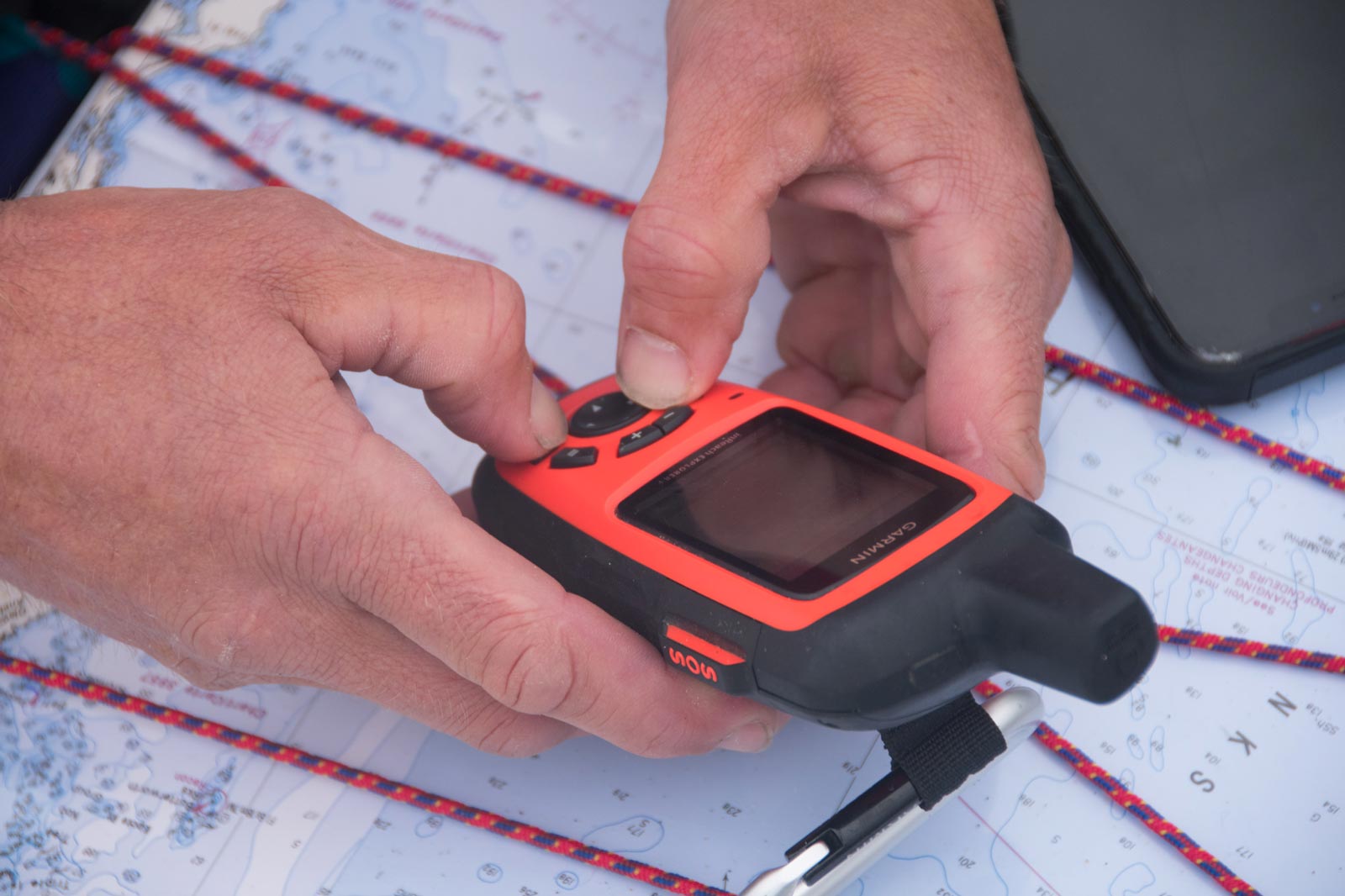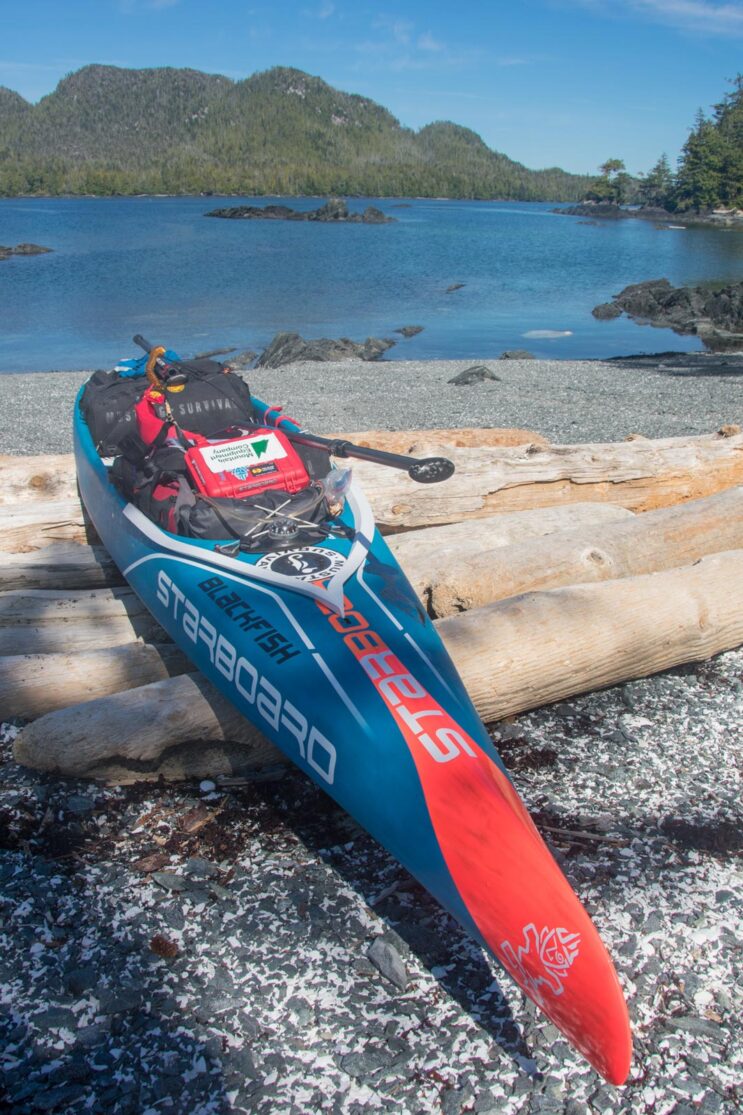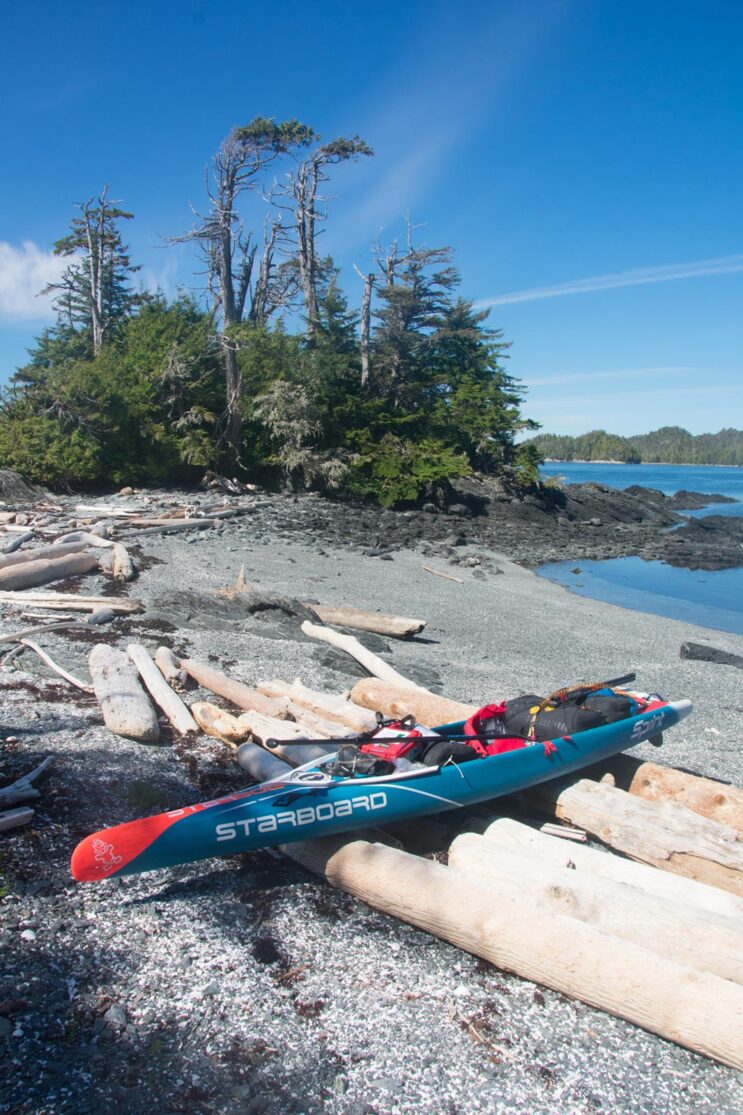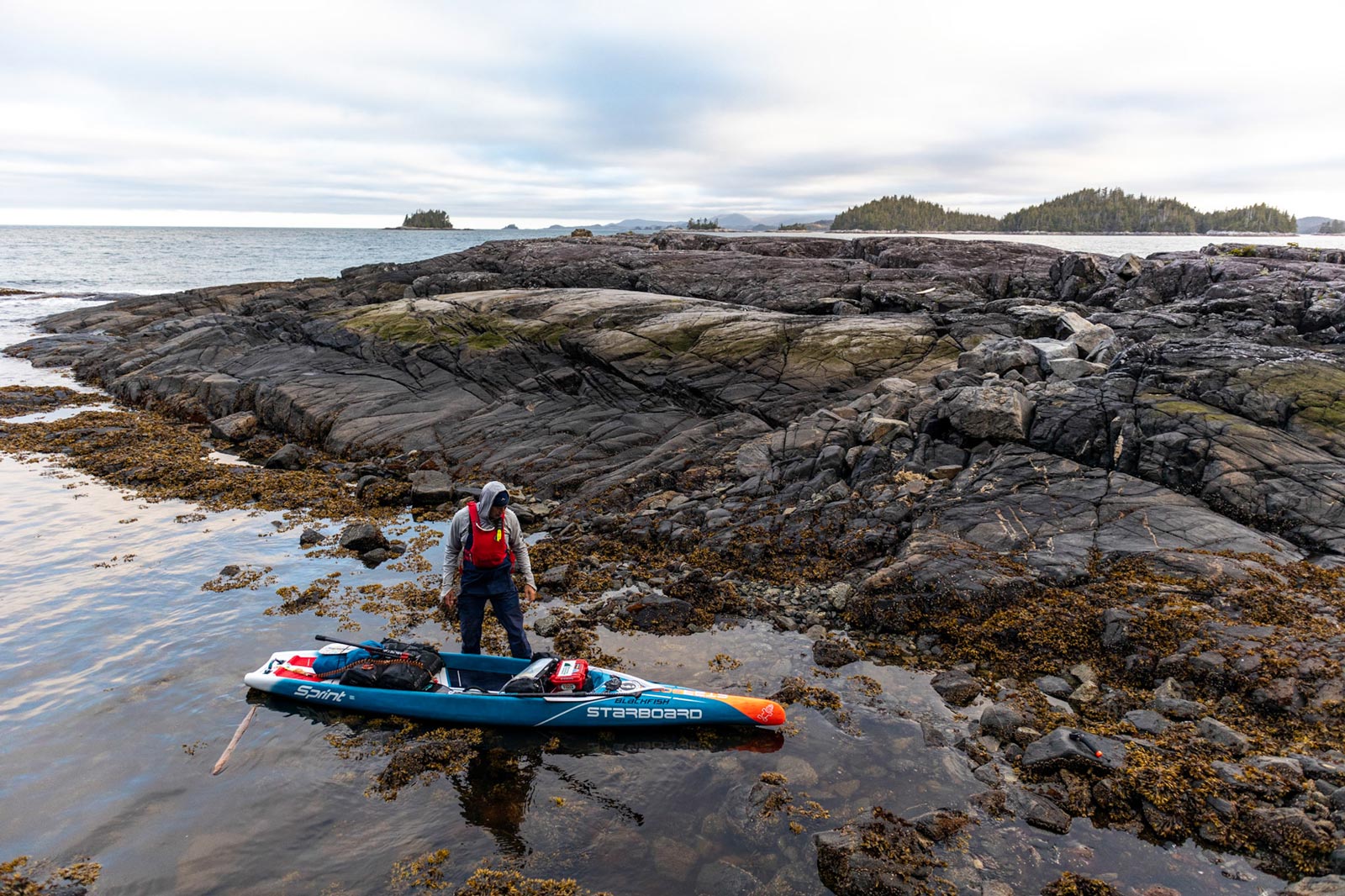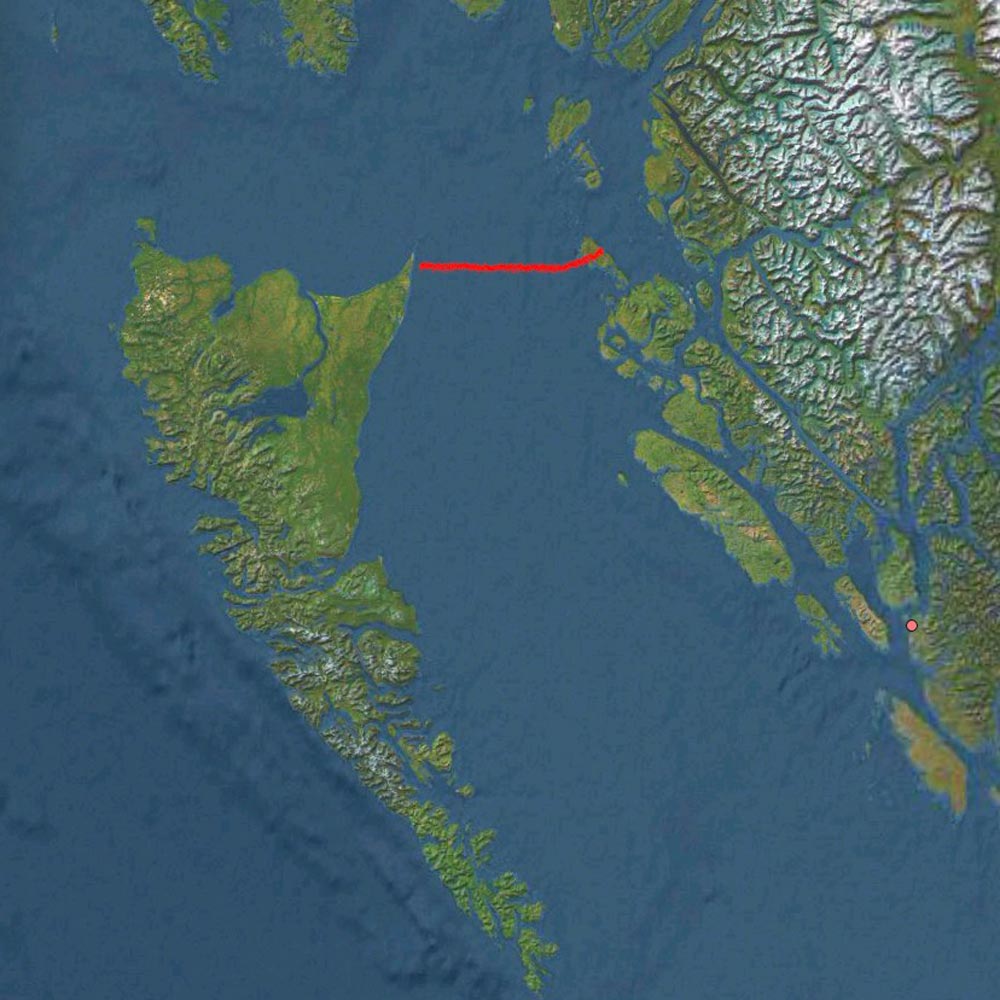CHAPTER 1: QU’EST-CE QUE HECATE?
Lying off the northern coast of British Columbia, Hecate Strait is the notorious body of water separating the islands of Haida Gwaii from the mainland. Strong winds and tides are funnelled over shallow waters, and Environment Canada lists Hecate as the most dangerous body of water on the Canadian coast (fourth most dangerous in the world.) John Vaillant, author of The Golden Spruce, put it this way: The strait is a malevolent weather factory. During winter storms, waves can reach 10-20m and expose the sea floor. The result is one of the most diabolically hostile environments that wind, sea and land are capable of conjuring up.
For mariners, Hecate carries a daunting reputation; demanding respect and instilling trepidation. It is the site of many tragedies and much suffering.
The Haida once routinely crossed the Strait in their great cedar canoes (up to 60 feet long, 6 feet wide and carrying 100 men), pillaging coastal nations then retreating back across the moody waters, where few dared to follow.
The history of other human powered crossings is scant. Masset kayaker Chris Williamson made two attempts in the 90’s; one successful, the other turned back at night by changing winds. Legendary painter Stewart Marshall from Sointula sailed a homemade kayak 200 nm across Queen Charlotte Strait in a SE storm, surviving for three days on popcorn and coffee before arriving at Cape St James. In 2008, a group of four young Haida Gwaii men crossed in double sea kayaks as part of a fundraiser. But Google ‘Hecate kayak crossing’ and you won’t find much.
Certainly no one had crossed on a paddleboard when Norm and I started discussing the possibility five years ago. But neither of us cared about being ‘first’—that seemed totally irrelevant. Rather, we were drawn to the sense of unknown. Could the substantial challenges Hecate posed be safely overcome using the skills and abilities we were slowly accumulating on coastal waters? What insights and lessons might travelling this ancient Haida route offer?
CHAPTER 2: THE PLAN
I met Norm at the Multiplicity (Whistler World Ski & Snowboard Festival) in 2016, where we were both speaking about past adventures. We shared a paddleboarding background. Norm was a successful racer who had transitioned to long coastal journeys. I had recently paddled solo around the outside of Vancouver Island.
When Norm called me a few months later, and asked if I’d be interested in trying to paddle across Hecate with him, I felt deeply honoured—and said YES unhesitatingly.
Soon we began planning, and watching weather. Over the winter, we met a few times in Squamish to paddle. The next spring we drove to Prince George, planning to carry on towards Haida Gwaii. But with a series of storms forecast to crash on the BC coast, we turned back and went home. Thank goodness, because in retrospect we weren’t ready.
For the next five years, we continued to watch Hecate’s weather patterns, while tackling increasingly challenging SUP expeditions together; a Gitgat Grease Trail, Cape Scott, Brooks Peninsula, Cape Caution. As our skills and sense of trust and teamwork grew, we felt increasingly ready.
Knowing that Hecate was ultimately in charge, and nothing less than a perfect weather forecast would do, we planned a journey down the northern BC coast this summer, both aware that if the stars aligned, and a weather window magically appeared, we’d drop all those plans and hightail it to Haida Gwaii.
CHAPTER 3: GETTING IN POSITION
It was late May when Norm and I met at his home in Royston and drove to Port Hardy, where we had reservations on the 7am ferry. Sleeping in the back of my pickup, I awoke at 3am to the sound of Norm puking his guts out. We clearly weren’t taking the ferry that day.
For the next 24 hours Norm couldn’t even take a sip of water. What was it? Food poisoning? COVID? Flu? Should we turn back? Did it make sense to start such a journey depleted?
Two days later, with Norm feeling somewhat better, we jumped on the 18-hour ferry to Prince Rupert. To our amazement, relatively light winds were forecast in the coming week, following a passing frontal system, but it wasn’t enough to convince us. We pitched a tent that night in a dark corner of the BC Ferry parking lot, unsure whether we’d jump another ferry to Haida Gwaii the next morning, or load the boards and start paddling south instead.
By morning, the light NW winds forecast for later in the week had bumped up to 5-15kn, not something either of us felt comfortable with. But the frontal system was already clearing, and tomorrow, in its wake, west winds would be followed by a period of ‘light and variable.’ If we could launch in less than 24 hours, it might just work. We bought tickets and by 10:30 were aboard a ferry headed to Haida Gwaii.
As the ferry chugged on, we emailed every friend and contact we had on Haida Gwaii, but no one could drive us north. It seemed we might miss the chance. In desperation, we started canvassing fellow ferry passengers–and we found Harmonie Rose. This delightful free spirit insisted we tie our two 14’ paddleboards to the roof of her tiny KIA, then raced off the ferry the moment it landed and drove us north to Masset, where she deposited us in the hands of Thor. Head of beach rescue, Thor is one of very few with the skills to drive Haida Gwaii’s endless beaches. As the sun dropped behind low clouds and darkness descended, he dropped Norm and I at the remote Fife cabin. Hecate strait lay before us; grey and moody. The next morning at dawn, we would launch.
CHAPTER 4: THE CROSSING
With a west wind behind us, we both understood that once we launched, there would be no turning back. The only way out would be through.
Few words were shared in the gray light of dawn as we strapped bags to boards, attached compasses, and double checked GPS way points. And then we were off. The first hour was a dream; a strong wind at our back pressed us over glassy waters. Despite preserving energy, we still covered 7.5km, which for fully loaded boards was great.
Then Hecate started to show us who she really was. Swell coming in from the north began hitting us on our rear quarter, and we had to concentrate. Then ebb turned to flood, and currents swirled. Soon an aggressive wind chop arrived from the south, hitting us on the other rear quarter, mixing with the swell and turning the ocean into a confused mess. Our progress slowed to a painful 4km/h.
The hours now passed slowly. We spent a lot of time alone with our thoughts. I tried hard not to focus on speed or progress—for it was dishearteningly slow. Just one more stroke. Then another. We never stopped. Snacks and gulps of water were grabbed between strokes. We saw nothing on those lonely waters; not a whale nor a boat.
Slowly the distant peaks of Stephen’s Island inched closer. 20km to go. Then 10. Dusk had descended by the time we made landfall. We’d been paddling for 11 hours, and it took us another full hour to find a camp along the rocky headlands. We crawled ashore, barely able to walk or even form sentences. But overjoyed. Somehow we got the tent up. Cooked a freeze dried meal. And then collapsed in our sleeping bags.
CHAPTER 5: THE OUTER ISLANDS
With Hecate behind, a huge weight had been lifted, leaving us free to enjoy the coast without reserve or worry. For years, the outer shores of Stephen’s and Porcher islands had filled our imaginations, and now we lazily paddled along rocky shores, exploring headlands and endless beaches, watching humpbacks feed and eagles soar overhead.
Norm and I have long been proponents of paddleboards as a safe and glorious way to explore wilderness coastlines, and this was expedition paddling at its very best.
A week later, with gale force northwesterlies descending, we ducked into the tiny settlement of Kitkatla, grabbed a boat back to Prince Rupert, and started the long voyage home.
PC Bruce Kirkby / Norman Hann


